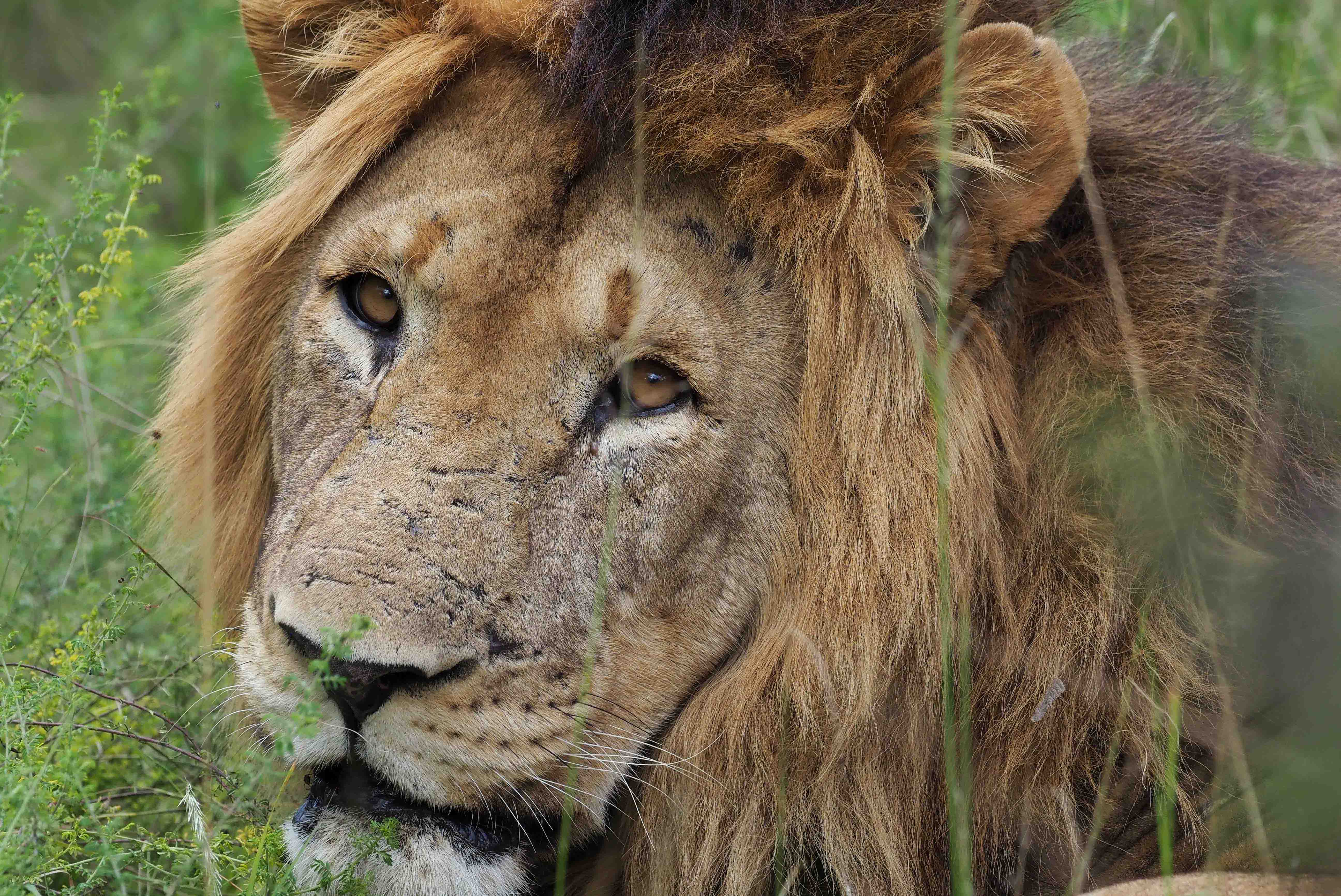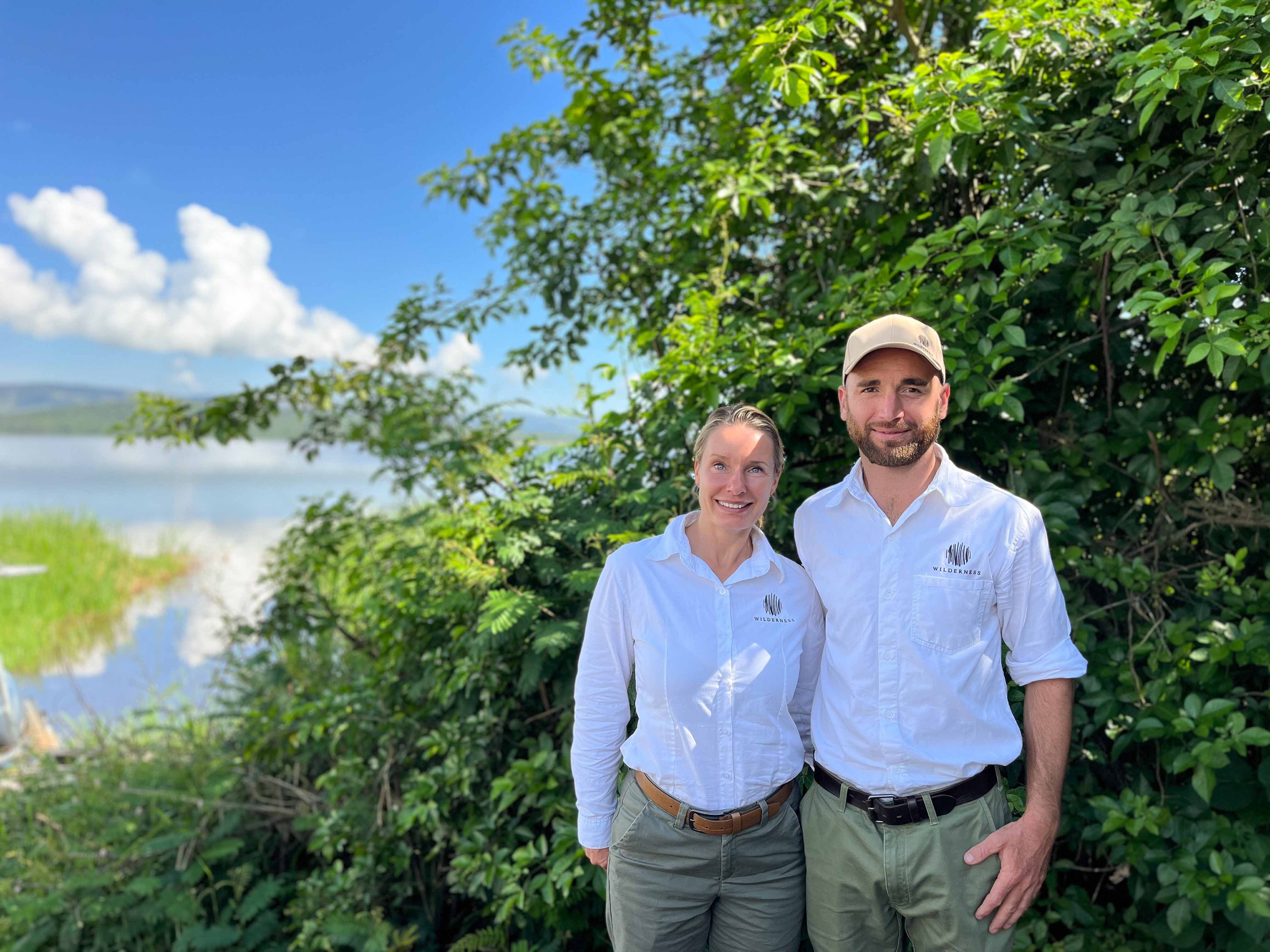Wildlife and other wondrous things
The cooler temperatures made wildlife much more active. Hippos were seen grazing on the banks of Lake Rwanyakazinga during the day, and April spoiled us with some of the most exciting predator sightings.
As the vegetation thrives in the rainy season, we regularly prevent the roads from overgrowing by carefully cutting back overhanging branches. Whilst out on one of these bush-clearing missions, our guides noticed a rotten stench, and when they investigated, found a hippo carcass with two big male lions, a lioness and four cubs feeding on it. Of course, they came back with the guests. Meanwhile, the hyenas had also tracked down the source of the “delicious” smell, and the guests witnessed epic scenes of lions and hyenas in a feeding frenzy, competing over every little scrap of vital protein.

In total, we had 16 different sightings of lions, and 19 sightings of spotted hyenas during April. But the main act on Magashi’s predator catwalk was the leopard. In total, our guests had 23 different sightings, and we were lucky enough to have even seen them regularly during daylight hours.
Like on this particular afternoon: guide Innocent and his guests were just cruising, enjoying a safari’s little things… until they turned a corner, and saw a leopard sitting on the side of the road. They spent more than an hour in the presence of this magnificent animal before the leopard headed out to mind its own business.

The birdlife did not disappoint either. A guest who had travelled all over Africa many times had yet to see giant kingfisher. Although they are quite scarce in Magashi she was lucky enough to find one here with her guide Herman, and was able to watch it at close quarters to her heart’s content.

Another very special sighting was of a herd of eland moving through the Magashi concession. In the old days, these large antelopes played an important role in the mystical beliefs of traditional hunters all over sub-Saharan Africa, and we are very happy to have a small population roaming through Akagera.
One event limited to the wet season, and only visible to those who stop and “smell the roses’ (sorry, pun intended!) is the abrupt appearance of fragile beauties belonging to the mushroom kingdom. Phallaceae, commonly known as stinkhorns, have a worldwide distribution, but are especially prevalent in tropical regions. They are known for their foul-smelling, sticky spore mass which attracts flies, beetles, and other insects to help disperse the spores. The appearance of Phallaceae is often sudden, as they can erupt from the undergrowth within just an hour; however, their beauty is fleeting as some will start dying off inside of a couple of hours already.










